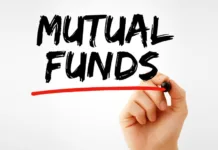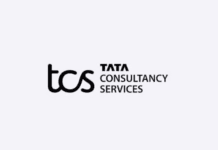Payroll deductions are used by the IRS to collect income taxes throughout the year because the US tax system is a pay-as-you-go system. Ideally, your company will automatically deduct taxes from your pay if you have a W-2 employment status. Taxes, however, are not simple for independent contractors. Because you are your own employer, you must pay a small additional “self-employment tax” each quarter in order to make contributions to Social Security and Medicare. These taxes go towards:
- -Government income tax
- -Tax on state income
- -Taxes for self-employment
- -Security benefits
- -Medicaid/medicare
Therefore, if you work as a freelancer and owe $1,000 or more in taxes when you file your yearly return, you must make quarterly tax payments. The same applies to businesses that anticipate owing the government at least $500.
However, if you match the following criteria, you might not always be required to pay estimated taxes:
- -You weren’t in tax trouble the prior year.
- -Your most recent tax return was for an entire year (12 months)
- -For the entire year, you held American citizenship.
Therefore, if you work for yourself or as a gig worker, you almost certainly have quarterly tax obligations. Four times a year, quarterly tax due dates arrive on schedule, but even for seasoned freelancers, keeping track of the precise date can be challenging. You can use Schedule SE to help calculate your self-employment tax.
The dates for quarterly tax payments are shown in the following table:
Period of Payment Due Date
September 1, 2021, to December 31, 2021 January 18, 2022, to March 31, 2022 April 18, 2022, to May 31, 2022 June 15, 2022, to August 31, 2022 September 15, 2022, to December 31, 2022, to January 16, 2023
You may make a payment on the following business day if any of the aforementioned due dates in a given year fall on a Saturday, Sunday, or holiday. Additionally, you can make the remaining tax payments for the prior year if by January 31st you file your taxes.
You must use the IRS’ Estimated Tax Worksheet, which is part of Form 1040ES, to determine your quarterly taxes as a freelancer (for individuals and freelancers).
Avoiding penalties is among the main justifications for paying your quarterly anticipated taxes. The penalty amount often varies depending on how much you underpaid and how late you paid. You might choose one of the following strategies to avoid the underpayment penalty:
You are permitted to pay 100% of your prior year’s tax obligation in projected tax installments.
You can pay 90% of your current year’s taxes in projected tax payments.
It may sound a little complicated, but if you want to earn roughly the same amount as you did the year before, you’ll use the primary strategy, which is quite straightforward. You can calculate your quarterly estimated tax by multiplying the amount of tax you paid on your prior year’s return by four to get the amount of your quarterly estimated tax.
When you submit your annual tax return, you will be compelled to pay additional taxes if you manage to earn more than you had anticipated. You won’t, however, face a severe fine.
The hitch is that you won’t be able to make excessive contributions that will be returned to you at the end of the year if your income decreases significantly.
You should be aware that your chances of obtaining accurate figures are extremely slim if you choose the second strategy, which involves attempting to predict how much money you will owe in taxes for the current year. Even though you may have determined your profit for the current quarter, you are unsure about your profit for the following one.
It’s also crucial to keep in mind that the penalty is relatively small—about 3% for a full year—so that underpaying by even $2,000 would result in a penalty of little more than $100. Although the exact math is convoluted, it mainly depends on how much you underpaid and how many quarters you were late.
Due to their unpredictable revenue, freelancers often struggle to come up with the money needed to pay their quarterly taxes. Therefore, it’s crucial to prepare for it and set away the debt you owe to make estimated tax payments.
Typical itemized deductions for freelancers include home office costs, mortgage interest, charity contributions, and more. The following list includes some of the typical tax deductions available to independent contractors:
Rent: You may deduct any rent you pay for a property used to operate your business. Utilities, such as heat, electricity, gas, water, and sewage, are deductible on your business tax return.
Contract Work: Any wages received for contract work are deductible from your taxes. Any bank or credit card payments you make with a company credit card are tax deductible. Office supplies: You can write off the cost of any equipment or materials you use to run your business.
Your anticipated adjusted gross income, taxable income, taxes, deductions, and credits for the year are some of the factors you must take into account when figuring out your estimated taxes. It is usually preferable to rely on math rather than estimation when it comes to paying your taxes.
As previously indicated, to calculate the estimated tax if you are a freelancer, self-employed individual or gig worker, you can use the IRS’ Estimated Tax Worksheet, which can be found on Forms 1040-ES (for individuals and freelancers) and 1120-W (for businesses). The form will assist you in calculating your annual tax obligation, dividing it into four equal payments before the due dates, and filing your taxes.
It can be a really frantic procedure to think about spreadsheets and keep track of all of your invoices and receipts. Automating your spending in this situation is in your best interest. Applications like FlyFin can lighten your load.
A.I. and CPA support the quarterly tax calculator offered by Flyfin. Your most precise quarterly tax amount is given to you by the A.I. after it has thoroughly examined all of your expenses. while assisting you in maximizing your savings.








